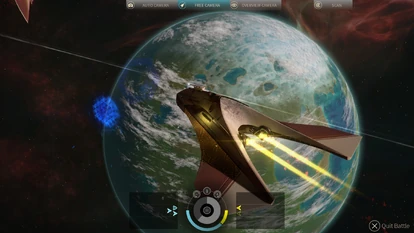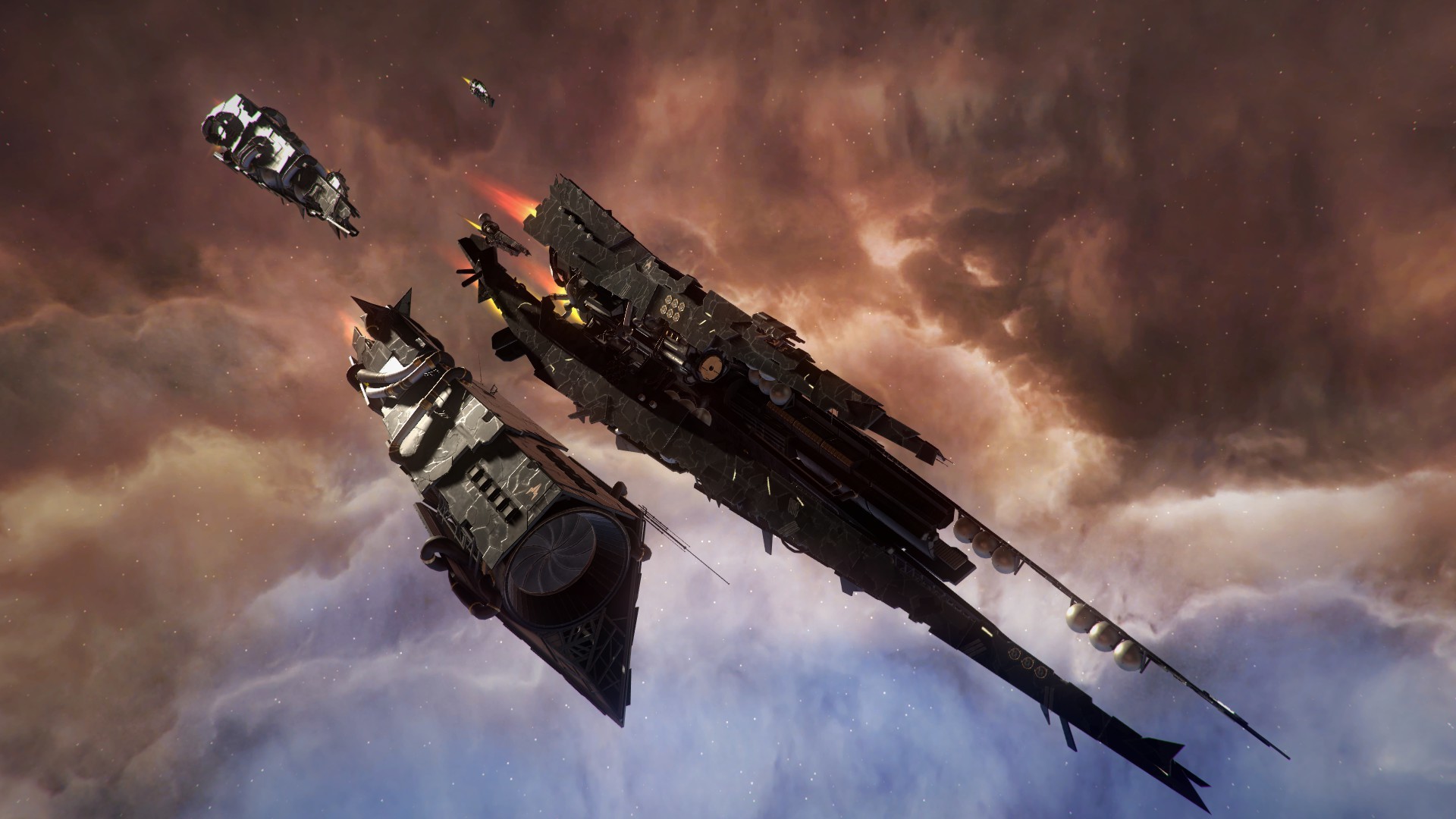Endless Space 2 Increase Command Points
Fastest way to close out a game of Endless Space 2? Become a Redditor. And subscribe to one of thousands of communities. How do I increase Command Points (CP) in my Fleet? (self.EndlessSpace) submitted 2 years ago by raidersraid. Which technologies do I need to research? HalfApathy Unfallen 1 point 2 points 3 points 2. Can you, please, add an option at the custom game menu to increrase the command points in this game? Some fill box with number from 0-999, or even a menu with some options like 20, 50, 100 and 200. I would LOVE to see thoose sweet space toys you've made for this game in a larger fleet battle, and i'm sure i0m not the only one!
Ground armies are used only for defense during an invasion or when you want to conquer an enemy system. You don't have to train them separately like ships. Ground armies are based on the amount of fleet crews and defense forces in systems. The second value can be increased by building certain military structures or by assigning a hero that can increase it.
When it comes to ships it all depends on the size and number of special support modules that increase the amount of people in a given ship. Bigger ships have more bonuses for those modules so you can think about making a specific type of a ship with a lot of support modules and with a small amount of weapons.
This 'invasion' ship will only be used for assaults and conquering planets.A ground battle happens when a fleet is orbiting a system in which there are no enemy fleets that can interrupt an invasion. First, if you want to initiate a ground attack you must start with a system blockade. If forces on a planet are stronger than yours you can wait with an attack. Because of a siege, a defender's garrison gets smaller with each turn. Some modules can speed up this process. However, it is usually better to start a ground battle because you can avoid a counterattack by enemy's fleet or a situation in which you were close to take over a planet but you were forced to sign a peace treaty. A ground battle is similar to those that take place in space.
After selecting a tactical plan you can see how your forces are doing on a planet. Before that you can add heavy equipment or upgrade your units in Military screen.
Some race bonuses can help only when you are attacking or defending a system. Usually, it is an additional attack before a main battle or an increased number of soldiers in a system. As you can see your options, when it comes to helping and supporting your army, are very limited.When you are attacking you can select one of the three following tactics:. Preemptive Bombing. You damage enemy's army before an attack but you increase your chances in damaging improvements and/or killing population. Infiltration.

A round is longer but the attacker has bonuses to resistance at the expense of attack power. Blitz. A quick attack that deals a lot of damage but is also deadly for the attacker.If you are defending you have similar choices:.
Local Resistance. You receive additional units but you must spend one representative of a race. A useful option if you don't have a lot of units in garrison or your reinforcements will take some time to arrive in your system. Protect System.
A head-on battle. Defender's army has more health points but the loses in civilians and buildings are smaller. Surrender. You give up a system without a fight. This option is useful if you want to avoid destruction in a system and you have already sent a fleet to help the defenders. Your choice of ground army is unlocked with your technology progress which allows you to change your units. You don't have to train or buy new units.
You just have to enter the Troop Management menu. Here, you can increase the usefulness of various types of units by paying a certain amount of money. An upgrade is immediate. You can also increase the number of a given type of unit in your army. The army created in this screen will appear in every ground battle, invasion or defense. Infantry is the basic type of units, you can enhance them by using better anti-aircraft attacks.
Armour focuses on receiving damage and crushing infantry but it has problems with fighting aircrafts. Air is the best and the most expensive, when it comes to upgrades, type of units that you can have. Deals a lot of damage and has a decent amount of health points. Its goal is to destroy Armour units.If you plan on having many ground battles you should remember to have a suitable amount of crew in your fleets so your ground armies will have more units. You can build a few ships that have support modules that increases the number of crew.

Endless Space 2 Ships
If your enemy uses only Infantry then you must develop Armour units as quickly as possible. If they also use these units then get Air units and upgrade your Infantry. But remember that in this game wars are won not on planets' surfaces, but in space.?
Endless Space 2 is seemingly just a typical 4X game, however, it contains an incredibly high level of detail and the player can quickly become lost among the countless options and sources of different benefits to the empire. While starting each game you should definitely keep several things in mind, especially if this is your first encounter with this game.1. Select the human faction (United Empire) for your first playthrough. This way, it will be much easier to manage your empire. They employ classic solutions, their ships have the ability to mount larger numbers of modules, and they use Influence (one of the basic resources in the game) for the purposes of speeding up production, research, etc.
They can also colonise a greater amount of systems before reaching the approval penalty, which is connected to having too many systems under your control. Alternatively, you could pick the Sophons (bonuses to exploration and science) or the Horatio (greater population of systems, upgrades to your population but more expensive vessels).2. In the game you will often encounter the concept of FIDSI. This is an abbreviation for the five basic resources in the game: Food, Industry, Dust, Science, Influence. Food, Science and Industry speak for themselves, but Dust is the primary currency when it comes to buying resources or accelerating production.
On the other hand, Influence is used to expand the borders of your empire and is also used during negotiations and diplomatic talks.3. Systems are the basic territorial unit (the equivalent of cities in Civilization, provinces in Europa Universalis or planets in Sterallis), and not the planets in the systems. However, the more planets in the system, the better. Such a system will accommodate more population, will provide better FIDSI income (basic resources) and will have better chances of anomalies or strategic and luxury resources. Each planet has a different set of bonuses to the relevant FIDSI branch and to the approval.
In the system itself you may juggle population units at will, especially since almost all races have specific bonuses to production on certain types of planets.4. Focus on colonising large nearby systems. At the beginning you should avoid systems with a large number of gas planets. Their high yield of one of the basic resources may be tempting, but it will be a long time before you acquire the necessary technologies that make these planets useful. Focus on planets with friendly environments, special resources or positive anomalies, and consequently.5.
Begin with exploration! This will help you find out which planets may be even more valuable (or less).
You can often find a lost population unit or a new module for your ships. Each exploration ship (with the magnifying glass icon) has several probes on board.
They restock every few turns depending on the advancement of the module. You can send the probes to a planet with a curiosity or launch them out into the unknown (they will uncover terrain for several turns). At the beginning you will only be able to travel by using star lines between the systems, but given time you will unlock Free Movement for your ships, which will allow you to reach the most isolated systems.
It is worth building several of these ships at the beginning of the game, and even creating a small exploration fleet in the process, which will make it possible for you to handle e.g. An unexpected pirate vessel.5. In order to colonize you need a colony ship (usually). Most races use the classic colonization model: build a colony ship, send it to a given system, build an outpost, and help to develop this outpost until it becomes a legitimate colony. I wrote usually, because some of the factions have different methods of settling, but you will find out more about this in the descriptions of particular races. Unlike many other games, when you build a colony ship it does not drain a unit of population from the native planet! The outpost encourages migration or tries to 'grow' its own population.
Thanks to this, you can produce colonization units without fear of reducing your own population in your system. If you find that you have unnecessarily settled a given system - use the 'evacuation' command. You will get a colony ship at the cost of the entire population and the improvements that you have already constructed.6. Modules are the elements of each ship - armaments, armour or shields, additional equipment (engines, probes, etc.).
You will gain more powerful ships not by unlocking a better unit, but by unlocking new, more advanced modules and installing them onto a ship. In a separate ship design menu you can decide on the quantity and quality of the invented modules. You can also discover new hull-classes of ships, which will often have more hit points and modules, as well as denser module slots (e.g. You can mount weapon modules in a given location, but they will count as double).7. Another simple way to increase the power of the fleet is to increase the Command Points. Each fleet has a limited number, which affects the number of ships in the fleet. Only one fleet can face off against another fleet in a battle.
Only after the skirmish comes to an end can another fleet join the fray. Therefore, even a small, but strong fleet can overcome several fleets of the enemy, one by one. Some technologies will allow you to develop this modifier, which will allow you to make up for the firepower by having a greater number of vessels in the fleet.8. Pirates come from neutral systems belonging to minor factions. They will appear from time to time and circulate around the system looking for a fight.
Until you conquer or assimilate such a system, their fleets will be created every few turns. Their quantity will be limited and the size of the fleet depends on the size of the neutral settlement. The more minor factions, the more such groups will travel throughout the nearby area.9.
Make sure to have the adequate administrators and admirals (heroes). It is better to have specialists than universal agents (although one or two 'fillers' will always be useful).
Heroes have access to many development paths, so check out all of the options and pick one of the two paths, that I am suggesting. The Admiral is a character, who will develop only fleet related skills and will lead your best ships into battle.
The Administrator is a hero, who will focus on increasing the profitability and productivity of your best systems or of the ones which have just been settled (in order to accelerate growth). You may, however, assign one or two skills from the opposite branch of the skill tree, in order to make the characters more useful in times of peace/war.10. Cold War - the diplomatic status you have with every newly encountered civilization. You can attack enemy fleets outside of their sphere of influence and block/invade their systems if they are within the range of your influence. This will affect your relationship with the given race. Increased generation of Influence (purple star symbol) in a given system can expand your sphere of influence.
Thanks to that, you will not only gain a reserve of diplomatic currency, but you will also be able to take over the enemy system in a peaceful manner (or in the already mentioned military manner). In addition, if an asteroid belt or a nebulon field is within the range of the influence of your system, you will receive its respective bonus.11. In the later part of the game you can get the access to terraforming option. Thanks to it you can not only change planets so they become more pleasant but they also will have more space. However, this process changes your FIDSI profits - the more pleasant worlds such as oceanic or terran have a good Food production but the bonuses for other resources are much smaller. Repulsive worlds such as lava or arid have the biggest bonuses to Production and Science per capita.
Sometimes, those planets can have anomalies that can make living on those planets easier for citizens or have luxury resources that can help in production or increase Approval. There may be situations in which you are forced to colonize a repulsive world to get a rare strategic resource.12. Minor factions (marked by dark grey color) are small civilizations that inhabit single systems. They don't create fleets, although they are full of pirates. On the other hand you can have diplomatic relationships with those small civilizations and create an alliance if you have the best relations with a given faction. By doing that you receive Dust, Science points, Manpower and you can even get luxury resources. With a full relationship bar you can also assimilate a faction which allows a system and its citizens to join you in a peaceful way.
Of course, another option is to declare a war and invade such system if you can't assimilate them in any other way because a different empire has already established the best possible relation.13. The more representatives of a given faction you have, the better are the bonuses from Collection Status. Usually they appear when you have 12, 20 and 50 representatives of a population in the entire empire. The first one is a fixed bonus to ideology if a representative is in a system. The next bonuses are more diverse: a percentage bonuses to a FIDSI resource, bigger Approval, a unique law etc. The game usually rewards those players that have many representatives in a system.
Some laws and upgrades offers you a bonus for each type of population in a system. On the other hand, it is hard to get more than one full bonus because of a population's size.14. Carefully select weapon modules and enhancements. In the beginning of a game you should simply invest in the best weapon module or have a similar amount of kinetic and laser weapons.
Thanks to that even if your enemy has, e.g. A thick armor you can still hurt them with lasers.

This also applies to additional modules. If you have a module that enhances energy weapons then you should only install this type of weapons on that ship because this allows you to maximize the firepower. Better modules require technologies that are based on strategic resources. They are easy to differentiate - a module's color corresponds to a particular strategic resource.
If the color is white then you don't need additional resources. Notice, that bigger ships requires strategic resources to even create a ship's hull so before that you should first seize a suitable system or buy resources from the Marketplace.15. Saints row 2 store locations. There are many ways that lead to victory.
Some civilizations are better in winning peacefully, others can do great during wars. Bonuses given by representatives of main race's population also have a big impact and can determine your play style. Remember that each civilization has a series of unique quests that offers bonuses that are impossible to get by other races. A new hero, a unique weapon module, System Development technology or a bonus for the entire empire.
It is worth to complete all of those quests because they can greatly strengthen your civilization. From time to time you can get a random quest or you can get one from a minor faction that allows you to assimilate them faster. Sometimes you can also receive a quest with a time limit that is given to all civilizations, e.g. Who gets the most Science points.